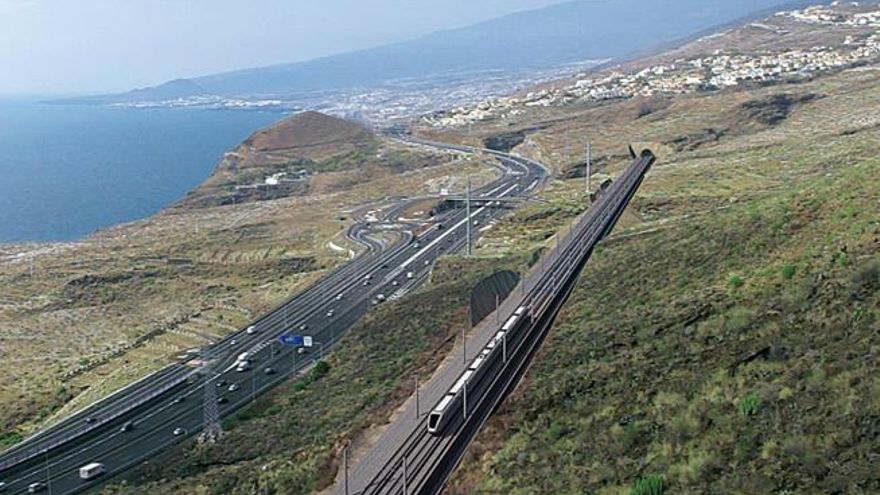
All aboard the train, specifically in the south of Tenerife. What has been rumoured for the past few years as a viable option for the island’s transport seems to be turning into reality in the upcoming years.
The president of the Tenerife Island Council, Rosa Dávila, announced on Thursday that the council expects the southern railway project to kick off with the San Isidro-Adeje section, with an estimated cost approaching 800 million euros.
This was revealed during a press conference with the Councillor for Presidency, Administration and Public Service, Territorial Planning and Historic Heritage, José Miguel Ruano, who emphasized that the island’s railway development is a “non-negotiable objective”.
Dávila stressed the need to update the technical projects after four years of government “paralysis” by the PSOE-CS coalition, as well as the expired environmental impact assessment declaration, and also to amend the Insular Plan for Tenerife (PIOT), tasks that will take at least a year to complete.
If the project secures the necessary funding and receives technical and legal approval, construction is estimated to take around four years.
The president appreciated the “full support” of the Ministry of Transport for the proposals of Tenerife and Gran Canaria and believes that there should be no difficulties in obtaining the required funds as the 4 billion euros needed for the complete projects in the two capital islands is not a significant amount for the State’s network.
She pointed out that the project aligns with the EU’s decarbonization goals, for which there are “ample funds” available, in addition to those from the central government, the Canary Islands government, and the council itself through Metrotenerife.
Dávila mentioned that the San Isidro-Adeje section was chosen because it has a daily traffic intensity of half a million journeys — 93% carried out by residents– and is equipped with an industrial zone, airport, port, hospital, and major employment centres.
In fact, this railway section would be the second busiest in terms of passenger intensity per kilometre, second only to the Madrid suburban network.
She highlighted that the train is “profitable” from both an economic and environmental perspective and provides a “solution” to the mobility issues faced by the island, while lamenting the lack of contact with the council at the ministry over the last four years.
The Northern Railway, Falling Behind
She also submitted documentation to the ministry about the northern railway project but admitted that it is not as “mature” and that other, less “aggressive” options are being explored for the territory, such as a ‘tram-train’ that could potentially reach El Sauzal at a slower speed than the southern railway.
Ruano noted that “the crucial aspect” was securing the ministry’s commitment to securing the necessary funds and now the focus shifts to updating all the projects, potentially integrating Tenerife into the national railway network, and amending the PIOT to include road corridors.
The working team agreed upon by the ministry and the Canary Islands institutions — consisting of the Railway Subdirector, the technical team of the General Transport Directorate, the Mobility Councillor of Gran Canaria, Teodoro Sosa, and the Mobility and Strategic Planning Councillors of the Tenerife Island Council, Eulalia García and José Miguel Ruano, respectively — will have their first meeting before the end of April.















